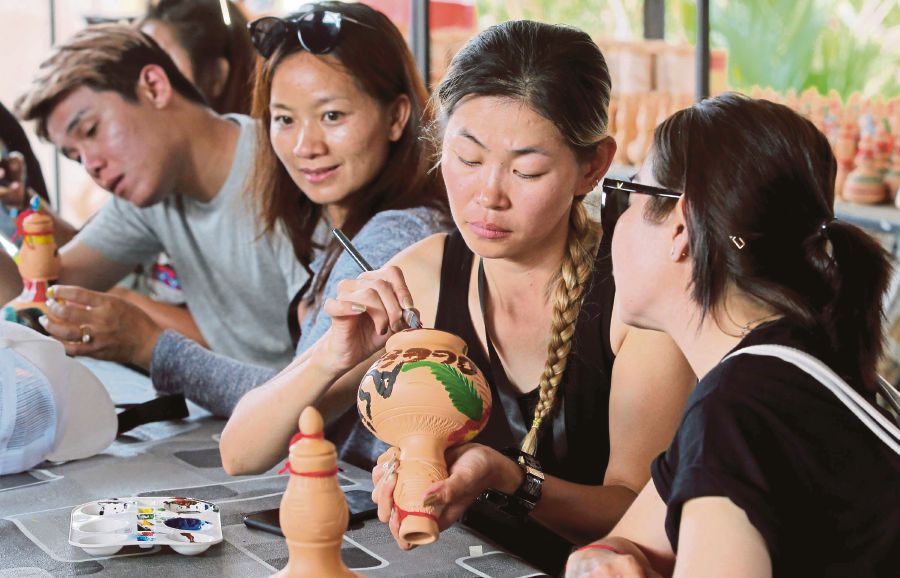IN the past five decades, the Association of Southeast Asian Nations, has seen an alphabet soup of agreements and blueprints shared between its 10 member states. But, none are as ambitious as the “Asean Community”.
Consisting of three pillars — Political Security, Economic and Socio-Cultural — the Asean Community intends to, among others, create a common regional identity for its 600 million citizens.
But, what a “common regional identity” means was left vague, either intentionally or not.
Regardless, it is sensible that Asean includes a people-centred, people-oriented element in its regionalisation efforts.
By promoting the human element, the benefits of Southeast Asian regionalisation can be better felt by the ordinary man on the street, the man that would be more likely to identify himself as a citizen of the region.
If Asean were to succeed in creating this common regional identity, it can act as the foundation and catalyst for greater institutionalisation of the political-security and economic pillars.
A common regional identity will shift how interest is viewed in the region — from narrow domestic interests, to wider regional interests — creating the necessary conditions for Asean regionalisation into the future.
But, if this effort were to fail, Associate Professor Farish Noor of Nanyang Technological University warns that there is a risk of Asean splitting into two.
The first layer may consist of global, outwardly, educated Southeast Asians who benefit greatly from the regionalisation efforts, while the second layer being a segment that does not identify as citizens of Southeast Asia, could potentially threaten such efforts.
This is because a common regional identity will serve as a buffer against the global trend of populist nationalism.
Despite this movement having yet to rear its ugly head in Southeast Asia, Asean should learn from the European Union.
While the EU had been successful in its regionalisation efforts, there were segments in the United Kingdom who did not feel the benefits of Europeanisation.
This, coupled with the perceived threat of the distant “other” through immigration, exacerbated by fears of terrorism, then led to this disenfranchised group to vote for Brexit.
Asean, already perceived to be slow in progressing by some, can ill afford similar setbacks.
However, its quest to create a common regional identity for its 600 million multi-religious, multi-cultural citizens at different development stages is easier said than done.
Nevertheless, measures to improve Asean’s awareness and, along with it, the creation of an Asean identity is already underway domestically. The Asean Circle is one such initiative.
A joint effort by the Institute of Strategic and International Studies Malaysia, the Foreign Affairs Ministry, International Trade and Industry Ministry, and Tourism and Culture Ministry aims to gather leading figures from all walks of society to brainstorm policy and implementation mechanisms to increase Asean’s awareness domestically.
Moving forward, Asean would be well served if it were to expand venues of its many meetings from the capital cities to the smaller Southeast Asian towns.
Through this, the Asean brand and presence will be felt closer at grassroots levels.
The economic trickle-down consideration for this shift is manifold, as only a fraction of Asean citizens live under wealthy urban circumstances.
To ignore this shift would risk alienating a large group of citizens that Asean claims to represent.
Another suggestion to cultivate a common regional identity is to shift the narrative of numerous shared cultures between Asean member states.
Currently, these shared cultures act as points of contention rather than celebration.
Examples would be the “dispute” over the origins of satay and batik painting with our neighbours to the west, and the origins of chicken rice with our neighbours to the south.
The late Benedict Anderson refers to shared culture as one of the ingredients behind an “imagined community”, which could then serve well towards the creation of this regional identity.
While even the most pessimistic will not dare opine that these differences will one day lead to blows, they present a missed opportunity if not capitalised for the formation of a common regional identity.
On the longer term, Asean should introduce a common module for the teaching of history in its member states. While this module should still focus on respective national histories, it would do well to place domestic syllabi within the larger Southeast Asian context.
This will inculcate a sense of identity and belonging in the youth as being citizens of Southeast Asia.
As Asean is projected to be the fourth largest economy by 2050, it is worth mentioning again the importance of the creation of this common regional identity.
Notwithstanding the threat posed by populist nationalism, Asean has a duty to make itself, and its regionalisation efforts, felt by its 600 million citizens.
This article first appeared in New Straits Times on 18 July 2017.





